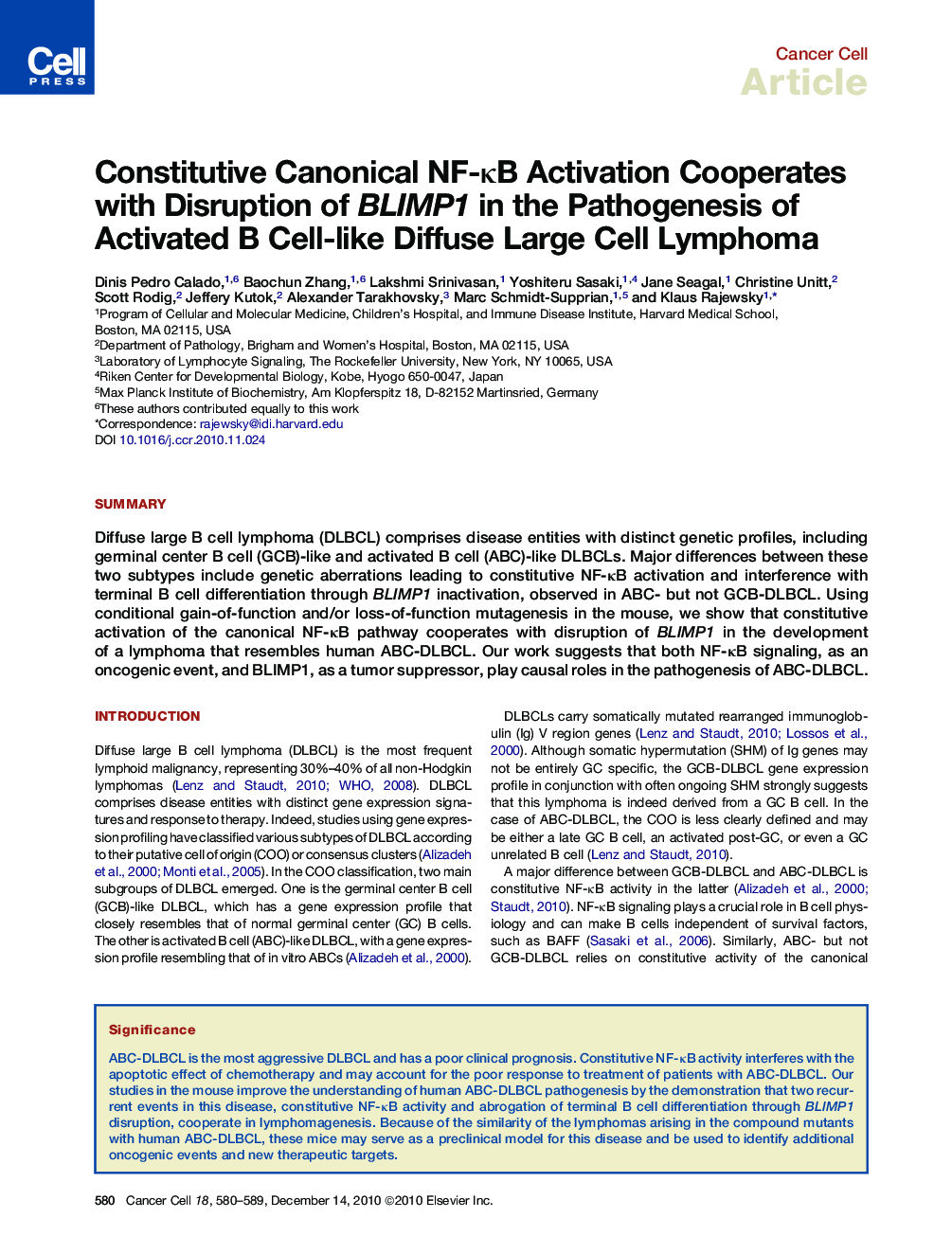| Article ID | Journal | Published Year | Pages | File Type |
|---|---|---|---|---|
| 2107591 | Cancer Cell | 2010 | 10 Pages |
SummaryDiffuse large B cell lymphoma (DLBCL) comprises disease entities with distinct genetic profiles, including germinal center B cell (GCB)-like and activated B cell (ABC)-like DLBCLs. Major differences between these two subtypes include genetic aberrations leading to constitutive NF-κB activation and interference with terminal B cell differentiation through BLIMP1 inactivation, observed in ABC- but not GCB-DLBCL. Using conditional gain-of-function and/or loss-of-function mutagenesis in the mouse, we show that constitutive activation of the canonical NF-κB pathway cooperates with disruption of BLIMP1 in the development of a lymphoma that resembles human ABC-DLBCL. Our work suggests that both NF-κB signaling, as an oncogenic event, and BLIMP1, as a tumor suppressor, play causal roles in the pathogenesis of ABC-DLBCL.
► BLIMP1 is a tumor suppressor whose loss promotes lymphomagenesis in a mouse model ► Constitutive canonical NF-κB activation induces B and plasma cell hyperplasia ► Constitutive canonical NF-κB activity synergizes with BLIMP1 loss in lymphomagenesis ► Lymphomas arising in compound mutant mice resemble human ABC-DLBCL
